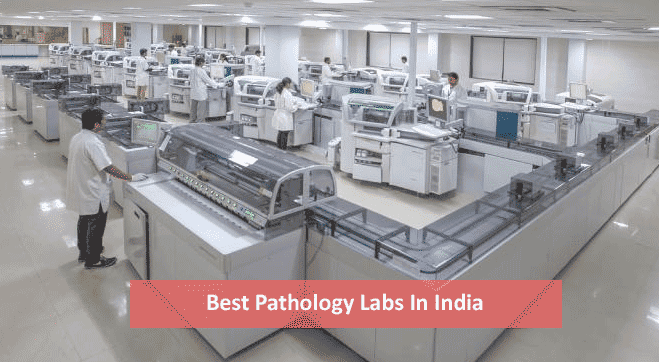Non-invasive Prenatal Testing NIPT Benefits Issues Legal Norms Explained
HealthcareOnTime
2021-07-30
2023-08-15
3 Min Read

Non-Invasive Prenatal Testing
A need for the pregnant couple to know how their prenatal risks can affect the unborn child
What is Prenatal Testing?
Prenatal as the name suggest refers to the phase from conception to birth, and the tests done during this stage
to assess well being of the involved and the unborn is referred to as prenatal testing. It includes series of
sonography tests and blood examinations. Prenatal testing has seen decades of transition in application and
performance. From a time when only advanced maternal age was accounted as a probability for high risk
pregnancy, today we have definitive screening and confirmatory tests in place to ascertain high risk
pregnancies beyond demographic and anthropometric contributions. In the screening space, serum
marker testing and the cell free DNA-based Non-Invasive Prenatal Test (NIPT) has gained tremendous
significance in the last couple years.
Technology Set The Background Score
Technological advancements have always played a crucial role in healthcare and data analysis tools as well
statistics with powerful IT systems in place have taken risk assessment to another level. Serum screening
involves measurement of Infertility levels in pregnant woman's serum and utilizing the data along with
sonography indications and demographic factors in a statistical risk calculator to determine risk for conditions
like trisomy of chromosomes 21, 18, 13 and neural tube detects. However, the discovery of cell free DNA
(CDNA) and liquid biopsy, led to the development of NIPT. The most highlighted significance of NIPT in spite
of being as sensitivity;> 99% for common chromosomal aneuploidies.
Ultrasound and analysis of various matemal serum biochemical markers are preliminary prenatal screening
tests for Down syndrome and, to a lesser extent, trisomy 18. Confirmatory prenatal test like the invasive
amniocentesis first 1950s, is today included as a standard practice for high risk pregnancies detected by
prenatal screening tools.
Prenatal testing, to a great extent has controlled the birth rate of children affected by chromosomal
aneuploidies. Though confirmatory tests bear an accuracy of between 97.5 - 99.8%, the risk associated
with sampling curtails its straightaway recommendation and it is in such scenarios wherein filtering in
genuine high risk pregnancies become a need. Prenatal screening tests aid in bridging this very
knowledge gap and NIPT does this with high sensitivity.
A Simple Blood Screening Test for Early Screening
NIPT is non-invasive because it requires the collection of venous blood from the pregnant woman and does
not pose any harm to the fetus. NIPT is a screening test. The test can only estimate presence of an increased
or decreased risk of having an affected fetus.
What makes this maternal blood tests interesting is that in contrast to serum screening, this test studies
the free-floating DNA moieties of both the motherand the child in the blood to compare and calculate risk.
NIPT
The use of cfDNA rather than direct fetal cells provide a reduced labor-intensive sampling process, avoids direct
contact with growing fetus, and makes the process anxiety-free. The great discovery in the history of prenatal
testing can be attributed to identifying the presence of circulating cell free fetal DNA (cffDNA) in maternal plasma.
cffDNA is the genetic material released by the feto-placental unit and circulates in the maternal blood during
pregnancy. After 10 weeks of gestation, the cffDNA shed from the placenta, reaches a level sufficient enough
for extraction and testing. Circulating cffDNA, RNA, and intact fetal cells in maternal blood can be used to
analyze the genetic status of the fetus non-invasively using Next Generation Sequencing (NGS). The circulating
cffDNA is stable and at levels of about 3 - 10% in the maternal blood and most importantly it is cleared from
the maternal circulation rapidly post-delivery and hence, is also specific to the pregnancy.
It is in the analysis wherein segregaion of the maternal cfDNA from cffDNA is done for accurate risk prediction.
NIPT albeit being a screening test is still a very genetic concept and hence the significance of preand post-test
counseling cannot be ruled out. In the entire prenatal testing plan, NIPT can be considered to be an adjunct to
the serum screening test and a bridge between non-invasive screening and the invasive confirmatory tests.
An adjunct we say as serum screening also assesses for risk of neural tube defects which is not covered by NIPT.
NIPT Indications
According to the American College of Obstetricians and Gynecologists (ACOG), risk factors which make any
pregnancy worth recommending for a NIPT include but not limited to:
- Maternal age 35 years or older
- Fetal ultrasonographic findings indicating an increased risk of aneuploidy
- History of a prior pregnancy with a trisomy
Positive test result for aneuploidy
Parental balanced Robertsonian translocation with increased risk of fetal trisomy 13 or trisomy 21
NIPT Screening Inclusions
- Few conditions which can be tested for include:
- Trisomy 21 (Down syndrome)
- Trisomy 18 (Edwards syndrome)
- Trisomy 13 (Patau syndrome)
- Rh blood type of baby
- Monogenic disorders Klinefelter syndrome (47, XXY)
- Turner syndrome (45, X)
- Single-gene disorders such as cystic fibrosis
Hemoglobinopathies
Microdeletion And Contiguous Gene Syndrome (CGS)
Chromosomal deletions can include several genes, and the doletions can be too small in size for detection
by routine GTG banding karyotype analysis. Microdeletions have different types of clinical manifestations,
depending on the amount of genetic material involved in deletion.' NIPT commonly tests for five of the most
- common types of CGS, including:
- 22q11.2 deletion syndrome (DiGeorge syndrome)
- 1p36 deletion syndrome
- Angelman syndrome
- Cri-du-chat syndrome
Prader-Willi syndrome (deletion of a part of chromosome 15 from the father)
Technologies In NIPT
NGS - Popularly known as massive parallel sequencing, is the engine which fuels today's big data in the
health world. With the ability to generate millions of genetic data points, NGS has truly emerged
as the platform of choice in multiple clinical and therapeutic settings. The most popular analysis method
is the Counting Method which counts the percentage of fetal cfDNA to predict the risk of chromosomal
aneuploidy. The most common chemistry is Whole Genome Sequencing which involves extraction of DNA
from maternal plasma for sequencing, followed by mapping the sequencing result with the human reference
genome using bioinformatics pipeline embedded with different tool kits followed by statistical estimation
of Z score for risk assessment.
Book Whole Body Checkup Package
Benefits of Prenatal Testing
- It is safe and accurate, has a high detection rate, high positive predictive value
- Decreased need for invasive procedure
- Earlier access to prenatal information may also allow for medical termination rather than surgical abortions
Clinical Issues of Prenatal Testing
The major ethical concern which can trickle as a clinical concern with NIPT is informed decision making.
Patients offered NIPT should receive pre- and post-test genetic counseling. Sometimes independent
clinicians may have less access to genetic counselors.
- Fetal Fraction. The fetal fraction or the amount of fetal DNA in the plasma can be greatly influenced by
maternal body mass index, ethnicity, gestational age, type of aneuploidy, singleton pregnancy versus
multiples, and mosaicism. Most tests require a minimum of 3-4% fetal fraction for drawing a sensitive conclusion.
- False-positive result - Confined placental mosaicism, maternal mosaicism, co-twin demise, or maternal
malignancy can result in false-positive results.
- Test result validation - The proprietary nature of the analysis algorithms used by different companies greatly
affect the independent result of test validation.
- Maternal-fetal medicine specialists receiving less hands-on practice in amniocentesis or CVS sample collection
procedure.
Some chromosomal abnormalities are not detected by NIPT which include translocations, inversions,
and Mendelian genetic conditions.
Legal and Regulatory Norms For NIPT In India
The Pre-conception and Pre-Natal Diagnostic Techniques Act, 1994 (PC-PNDT Act) was passed in India in the
year 1994 and subsequently amended in the year 2002 to prevent gender selection, control female foeticide
and balance the sex ratio. From the current and future point of view, if NIPT uptake is seen to exhibit an upward
acceptance trend, it is very important to have ethical practices being employed as genetic analysis of fetal DNA
also gives access to deciphering the gender of the unborn child. Therefore, NIPT needs strict monitoring to
ensure that maternal blood samples are not being misused for gender determination illegally. No laboratory
can handle maternal samples for prenatal genetic testing without a PCPNDT approval. The approval is a
mandate for genetic clinics as well as laboratories.
Conclusion
For the diagnostic and associated healthcare market in India, cost is always the controlling factor.
It is the basic barometer which determines effective knowledge and awareness dissemination in our social set
up and hence like for any other condition, affordability is the key for uptake of NIPT too. Being a genetic test,
NIPT comes with its own baggage of technical, instrumentation and laboratory running expenditures.
The need for highly skilled geneticists and professionals also add to the cost factor. A combined conscious effort
is needed from all stake holders to weigh the benefits to the society vs cost control to ensure the best.

























































